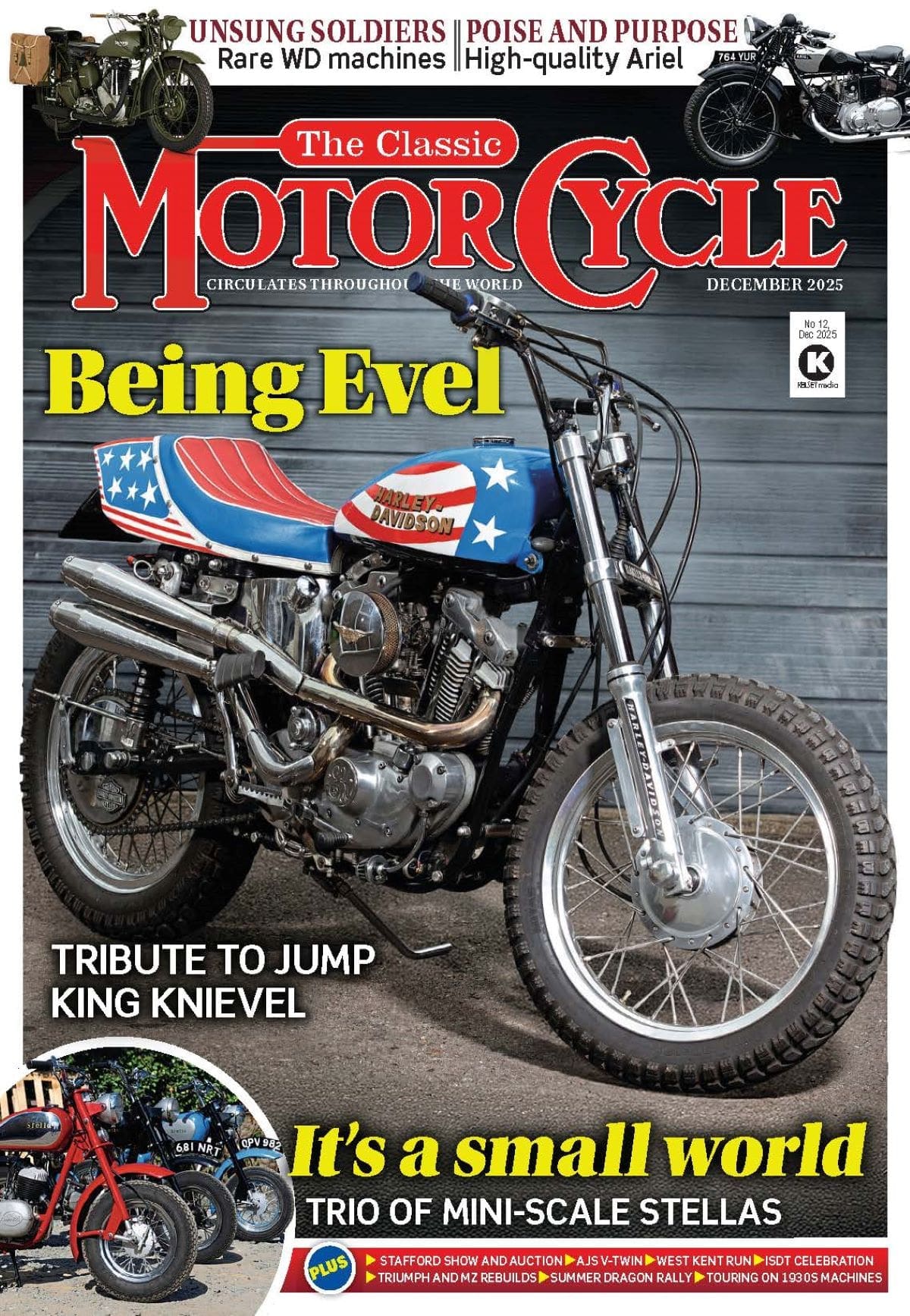If you had the pick of the British 650cc parallel twins, Norton’s 650SS would have to be high on the list. It was number one for one particular collector.
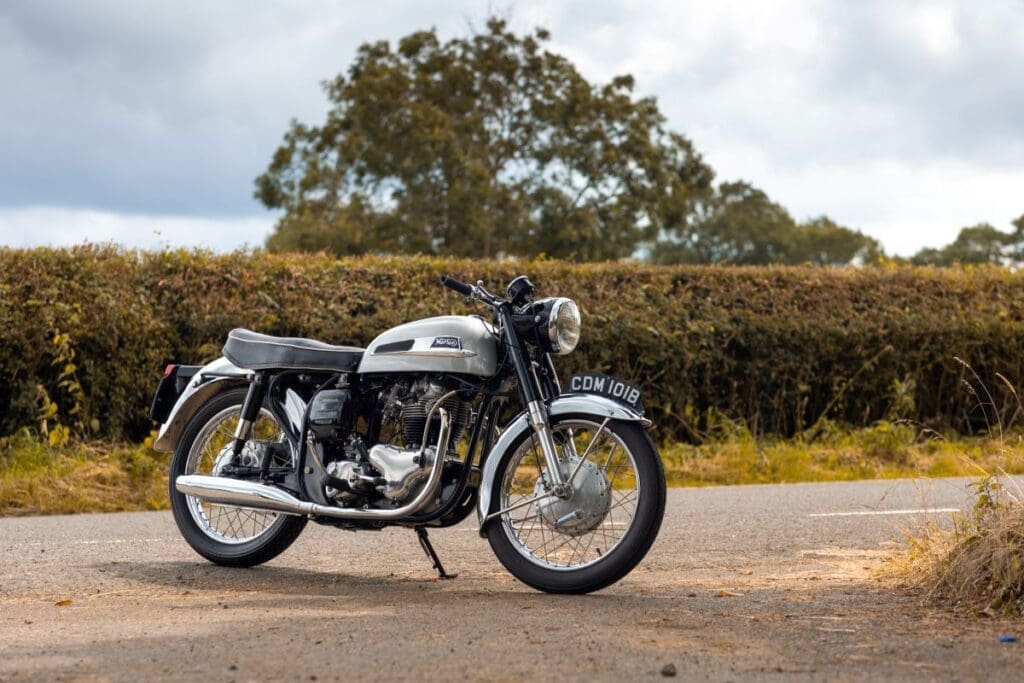
Words: Phil Turner Photographs: Gary Chapman
If money were no object and you wanted the finest example of a British 650cc twin, what would you go for: Bonneville, Rocket Goldie, Norton Dommie?
On what criteria would you base your decision: performance and racing pedigree, aesthetics, sound and feel? They’re all equally blessed in all those departments.
Enjoy more classic motorcycle reading, Click here to subscribe to one of our leading magazines.
Perhaps you’d be tipped one way or another by a past experience with, or preference towards, one particular marque?
It’s an exercise of pure fantasy for most of us of course, but for the gentleman who was about to become the owner of this particular 650SS, that hypothetical scenario is a reality.
Though he shall remain nameless, the gentleman in question resides not on these shores but in Japan. In recent decades a growing number of Japanese motorcycle enthusiasts have developed a passion for British motorcycles and the culture surrounding them, and are increasingly looking to the UK for their fix.
This particular chap has – I’m reliably informed – built up quite a collection of classic British machines, and was looking to add a 1960s 650cc twin to the mix. He settled on a Norton 650SS and as – fortunately for him – money wasn’t much of an object, his brief was to find the best example of the breed. Enthusiast and friend of another Japanese Norton fan John Oakes was the man tasked with finding one. John duly sourced this immaculate machine and before it headed East, we were invited to take it for a spin.
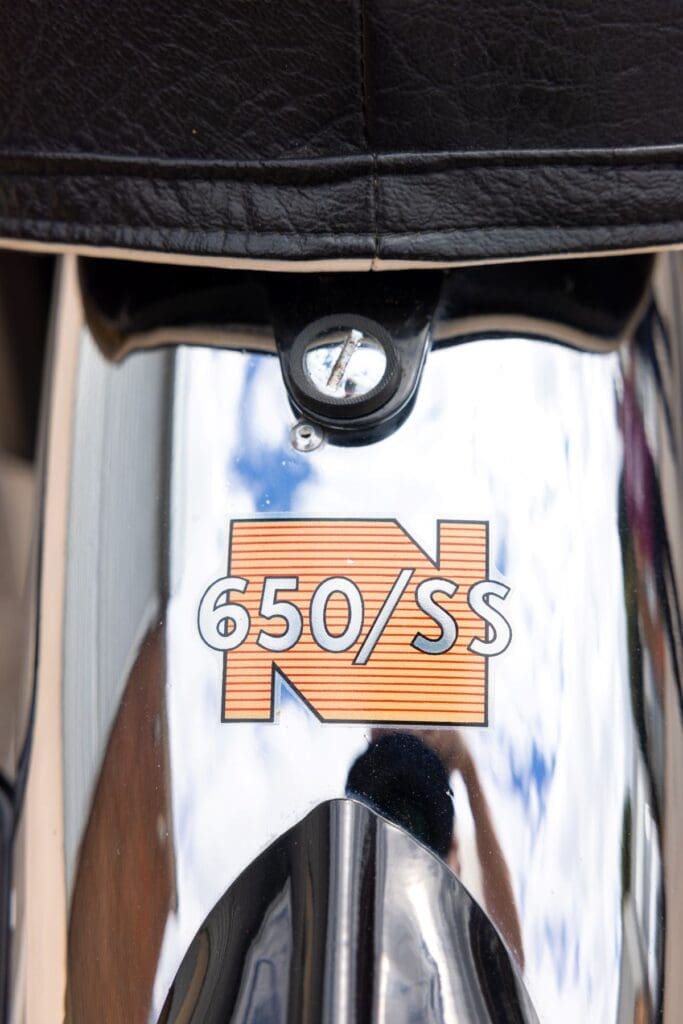
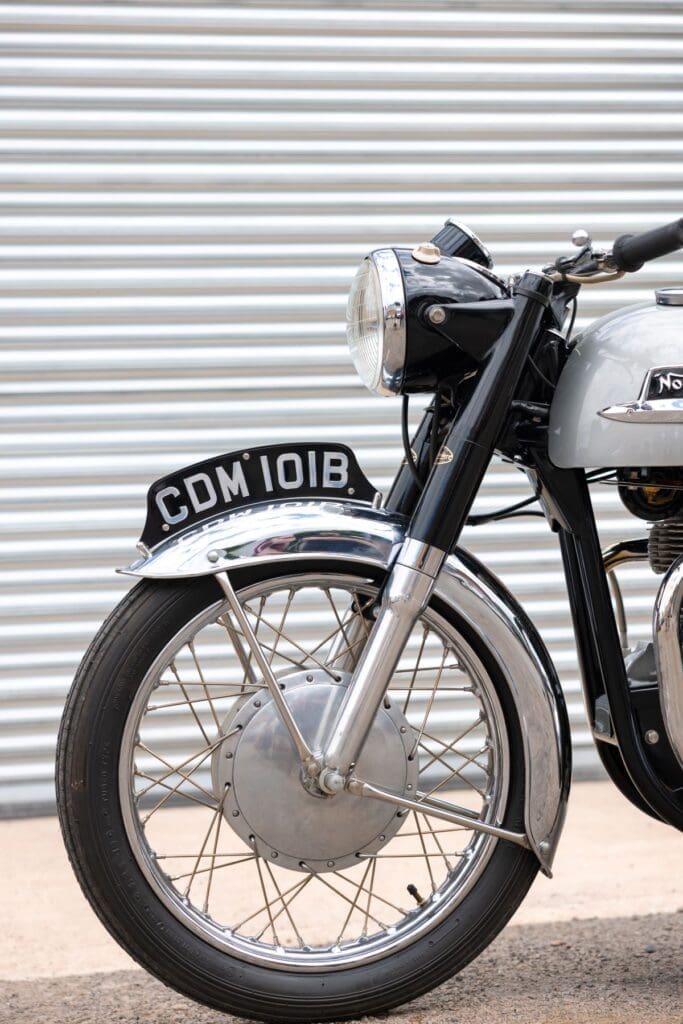
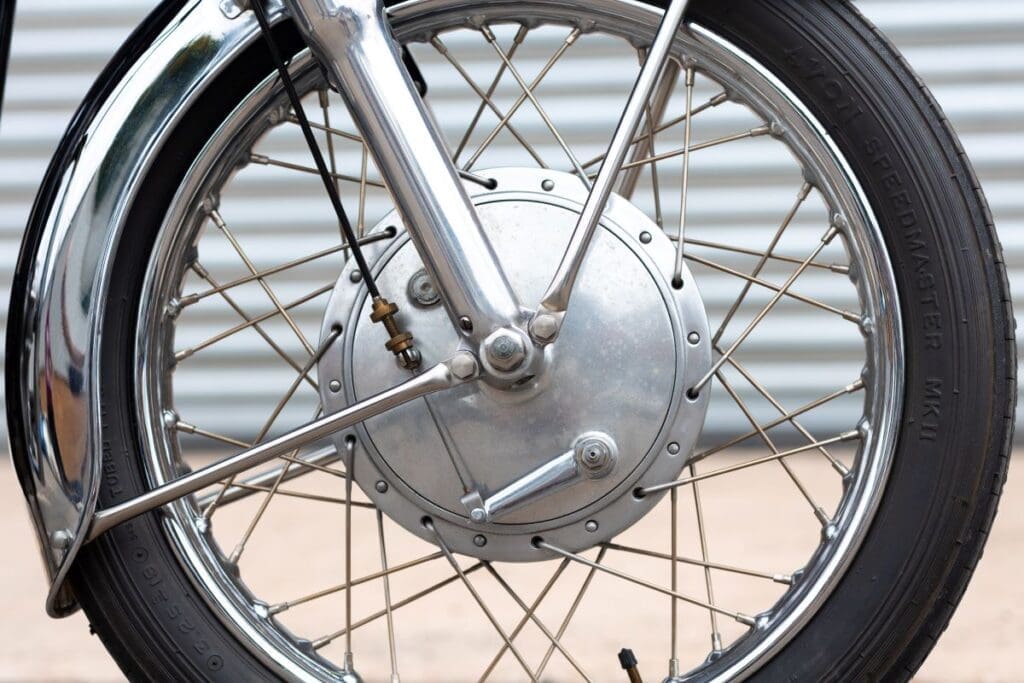
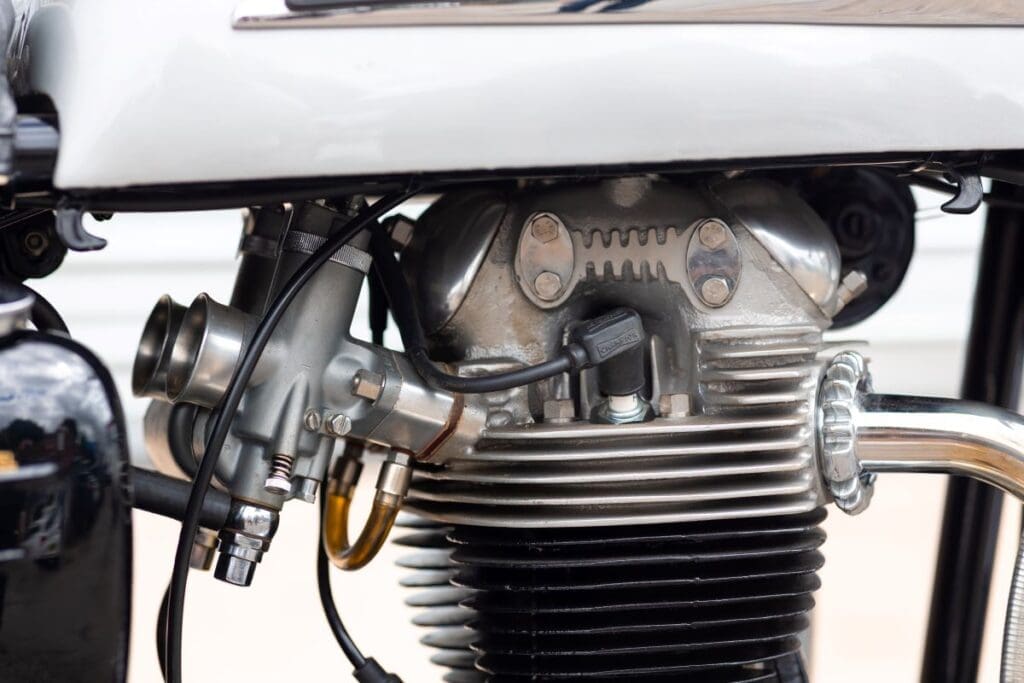
Pushing the envelope
Although I’m sure a few Triumph and BSA aficionados would, it’s hard to argue against the collector’s choice of the 650SS.
Regarded by many as the pinnacle of Norton’s Dominator range, the SS (Sport Special) introduced in 1962, was born of the long-running and successful Dominator line, which started with the Model 7 in 1949.
Norton had already built a strong reputation with its twin-cylinder machines by the early 1960s, particularly with the 88 and 99 Dominators. However, with growing competition from Triumph and BSA, who were pushing the envelope with bigger and more powerful options, Norton knew they needed to up their game.
Enter the 650cc engine. Norton had already experimented with a 650cc unit in the Dominator De Luxe, but the 650SS was a different beast altogether. It would need to be. To keep up with – and trump – the competition it wouldn’t just need to crack smooth, long-distance touring but would have to dominate both the road and track, with high performance and superior handling.
Although essentially a development of the 597cc 99SS – via the short-lived, export-only 650cc Manxman – the new model had been tweaked in all the right places and in exactly the right way to do just that.
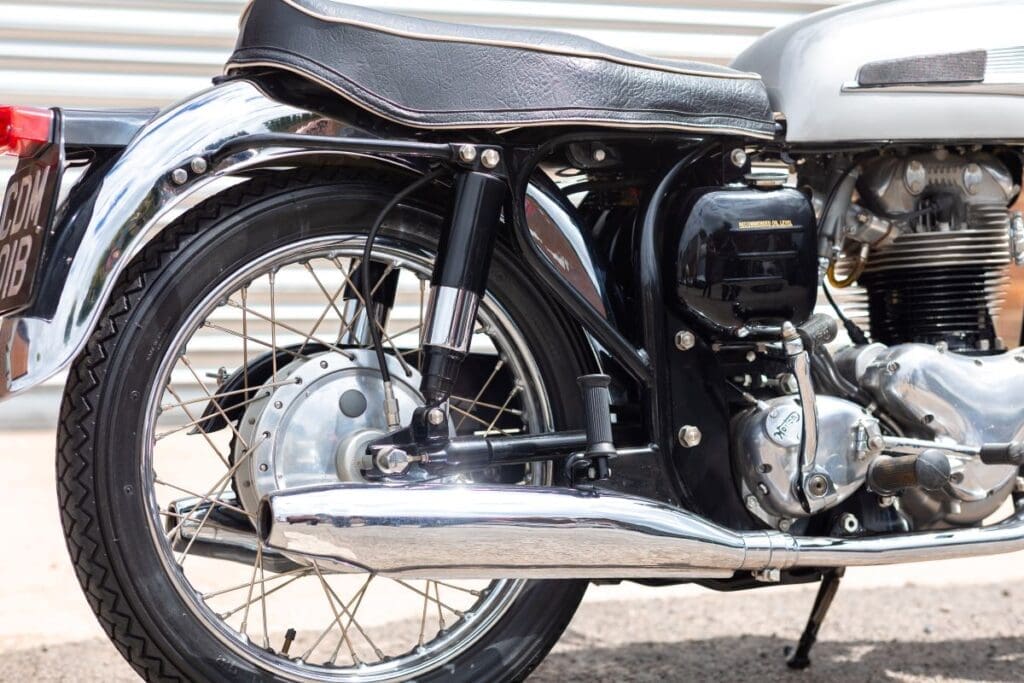
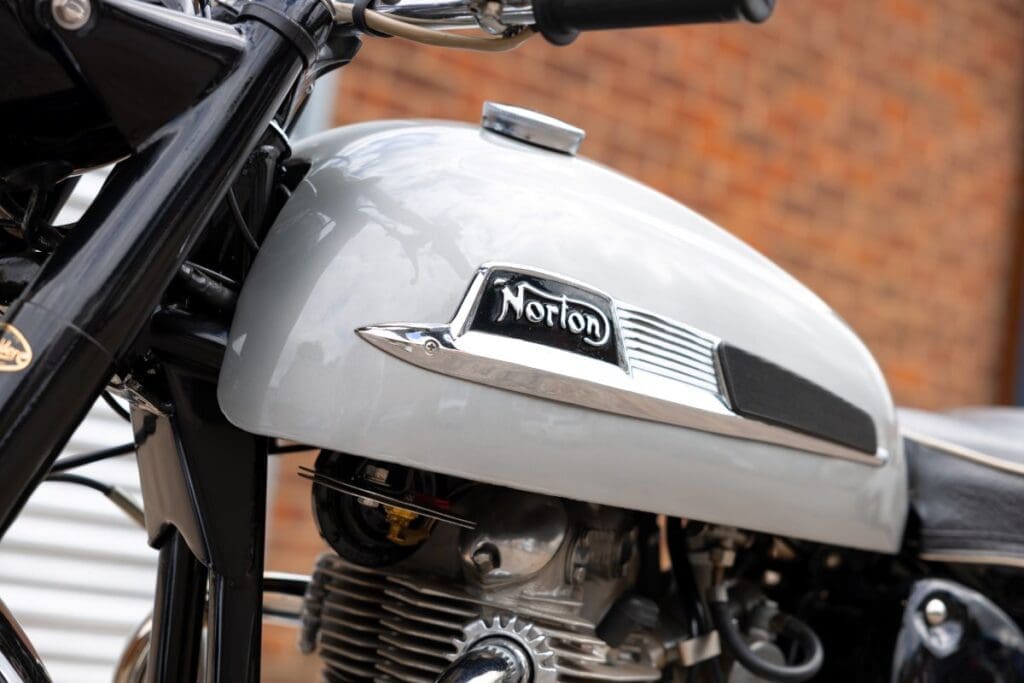
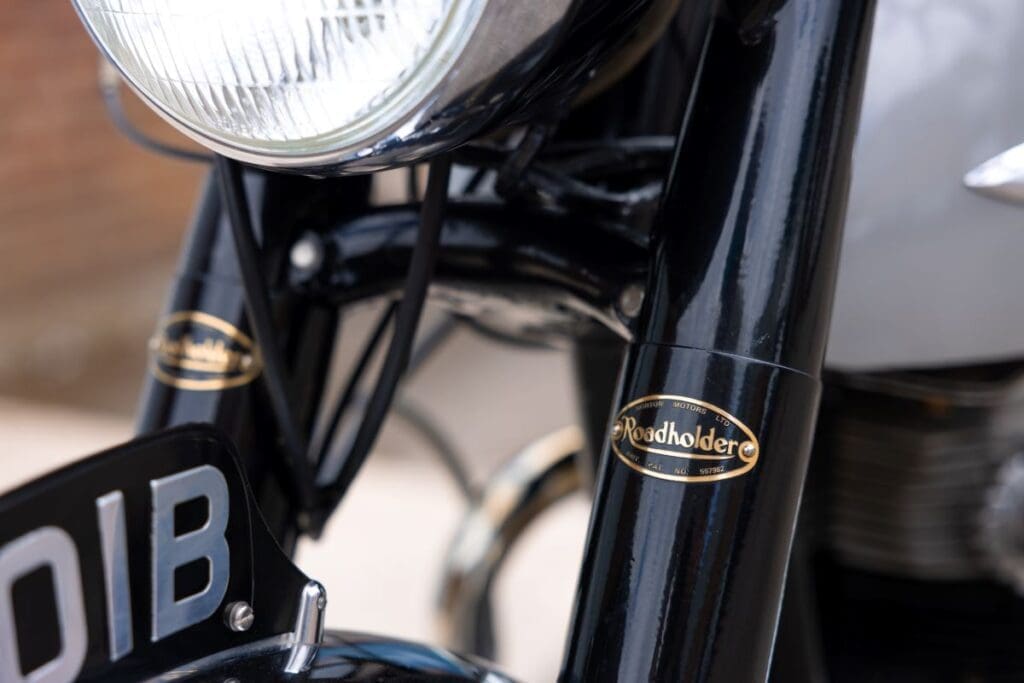
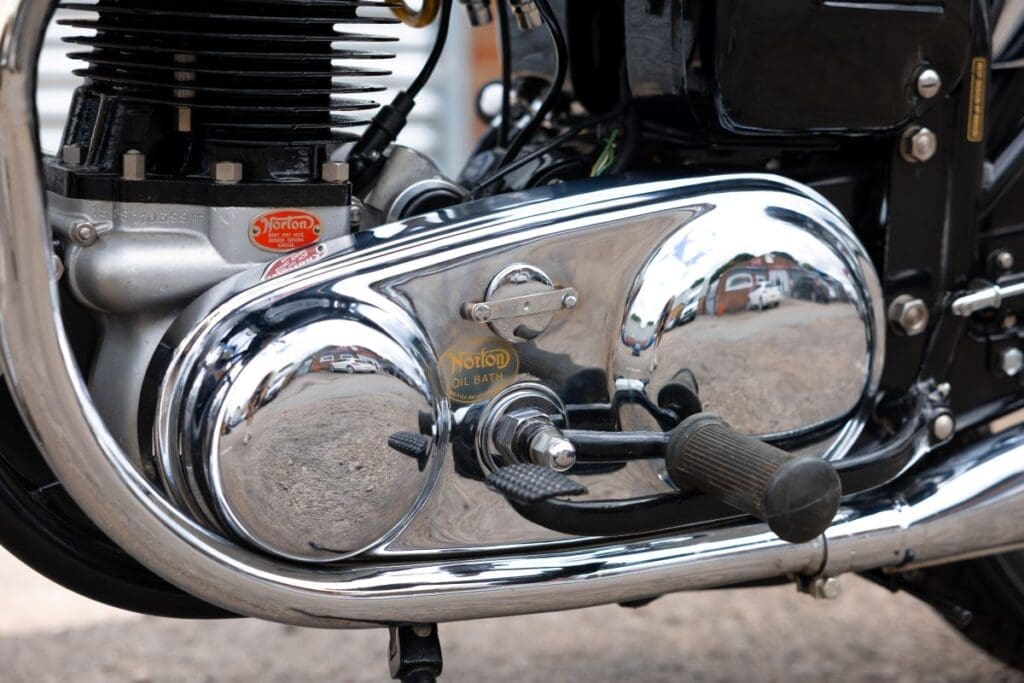
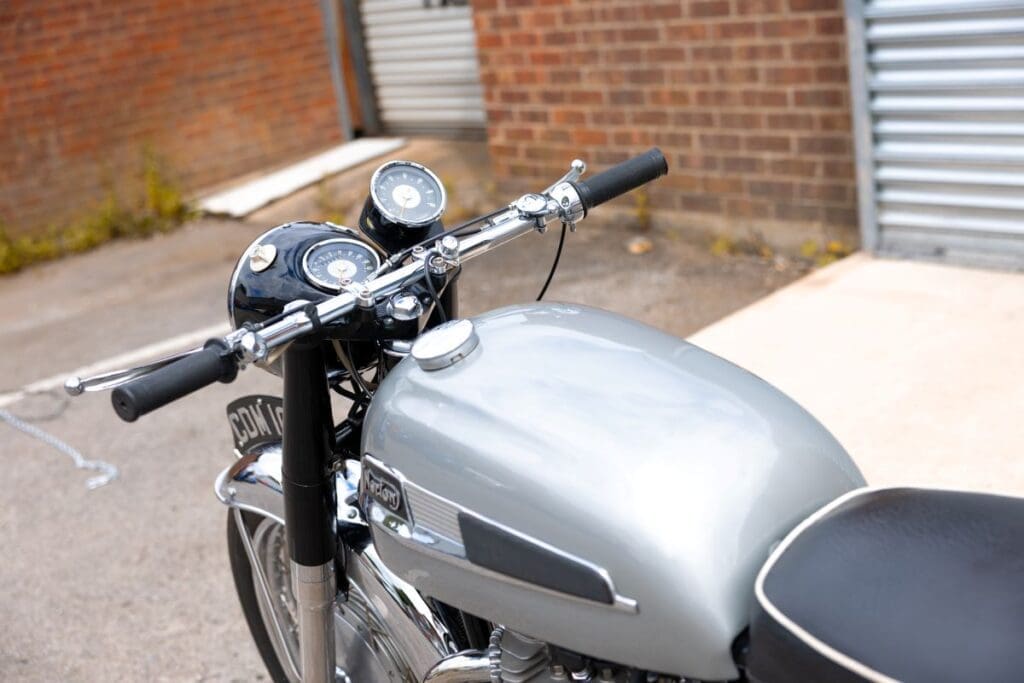
Performance and refinement
Capacity was up to 647cc; it breathed through twin Amal Monoblocs, with the intakes angled downwards to match the downdraft cylinder head developed from Norton’s Domiracer, which had been raced by Tom Phillis to third place at the previous year’s (1961’s) Isle of Man TT. Twin exhausts replaced the 99’s ‘siamesed’ system, and holding it all together was of course the Slimline Featherbed and Roadholders.
Styling was also updated; a classic black frame, silver painted tank, optional chrome mudguards and more sporty-looking speedo and tacho in place of the headlight nacelle underlined its performance potential.
And perform it definitely could. Power was up to an impressive 49bhp at 6800rpm. In the right hands and conditions, it could propel the SS to 120mph.
What made the 650SS stand out, however, wasn’t just raw power but its blend of performance and refinement. The engine was praised for its torquey delivery and broad power band, making it as comfortable at low speeds around town as it was roaring along the open road. The twin pipes delivered a deep, satisfying exhaust note, beloved by its riders.

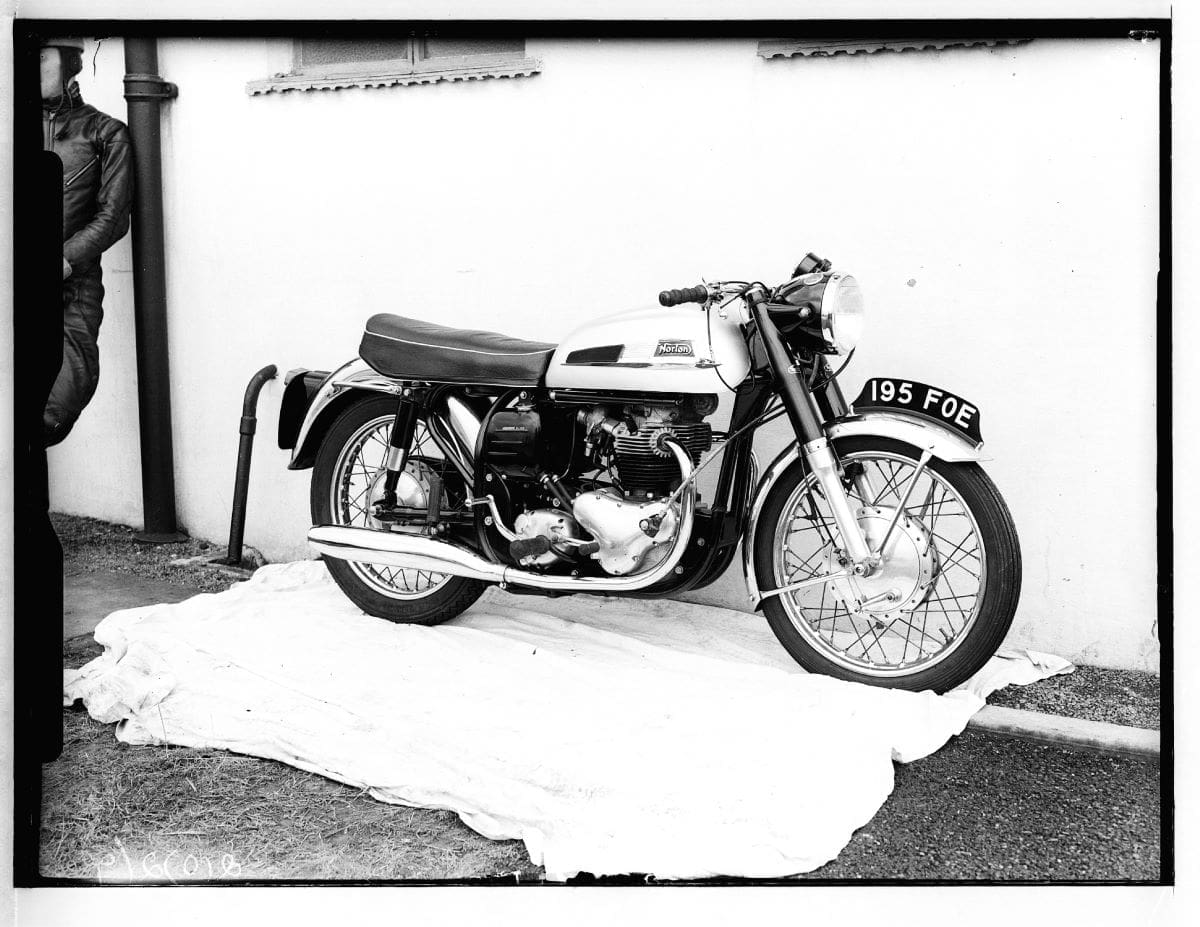
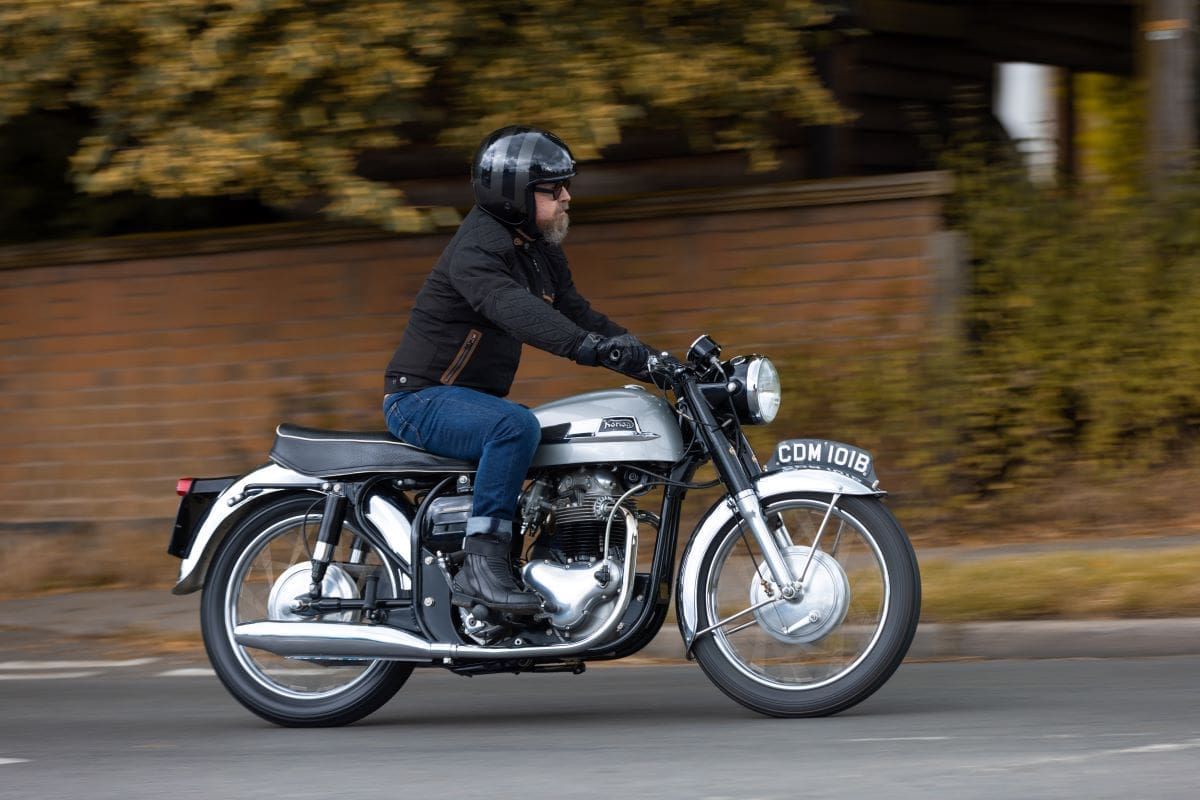
A formidable contender
The 650SS’ ability to edge the competition was of course mostly down to the Featherbed frame. First introduced for road riders in 1951 with the Model 88 Dominator, the race-bred Featherbed was a revelation, offering rigidity, lightness, and precise steering that quickly earned it a reputation as the best-handling frame in motorcycling.
For the 650SS, it was coupled with Norton’s Roadholder forks, and together they made the bike both agile in the corners and stable at high speeds. It gave even the most timid of riders the confidence to push their limits.
Those attributes made it just as popular at the other end of the riding spectrum too. While Norton’s factory racers remained on the Manx, the 650SS became a favourite in production-based racing, where its balance of straight-line speed and handling made it a formidable contender. It wasn’t uncommon to see a 650SS stripped down, with tuned engine, lighter components, and sporting a fairing.
Even without racing regalia, the styling of the Norton 650SS instantly set it apart from its predecessors. The SS had a modern, purposeful look, with its chrome fuel tank panels and polished engine casings adding a touch of class to its otherwise businesslike appearance.
The Slimline Featherbed frame gave it a lean, athletic stance, and the twin exhaust pipes completed the look. For many riders of the era, the 650SS represented the perfect blend of form and function.
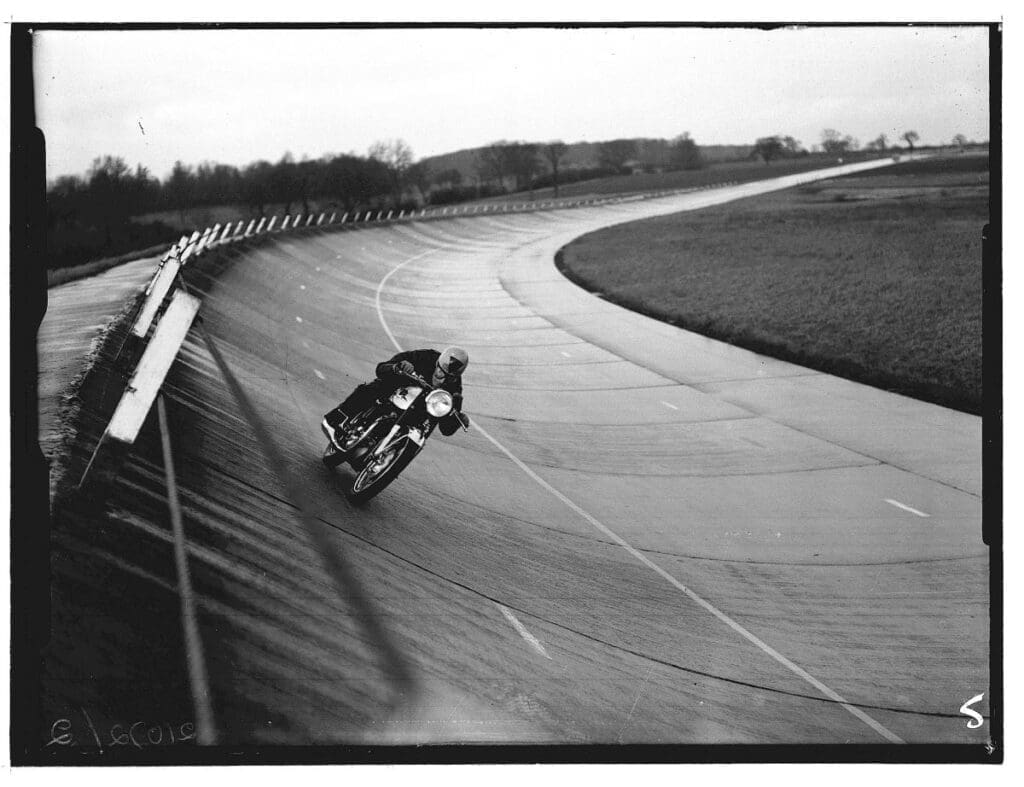
Not really built for a big twin
I’m always a tad apprehensive when I’m about to jump on board someone else’s machine, but I have to say my anxiety dial was turned up that little bit more knowing that I was to ride the 650SS before its new owner had even had the chance to see it – it wasn’t even on the same continent as him yet.
It was perhaps those nerves – but most likely my poor technique and weak right leg – that contributed to me not even being able to start it, and after a few attempts, I had to admit defeat and hand it over to John to do the honours.
An embarrassing start, but one that was soon forgotten as the Norton and I made our way out of Hinckley’s busy town centre and out into the rolling Leicestershire countryside; I must admit it felt quite strange, almost a betrayal, to be riding something other than a Triumph…
Along with the metaphorical came an actual relief to get out of the town and onto some open roads; I’m not really built for a big twin and was finding the Norton’s prone riding position a bit of a challenge in the stop-start traffic. Mercifully, the SS has the Slimline Featherbed and not the Wideline, so I could at least get one foot on the floor!
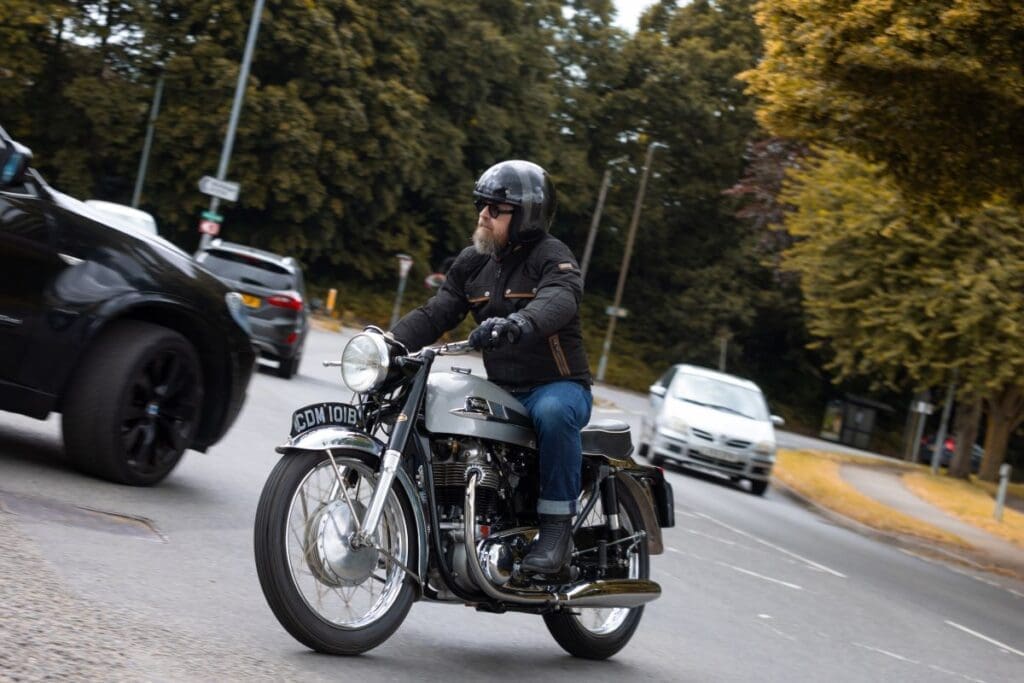
Carried away
With John leading on another machine, I had the luxury of being able to concentrate fully on enjoying the SS, and as the traffic thinned out and the road opened up, I did the same with the Norton’s taps. I instantly felt a surge of torque pulling at me, and as I began sliding back on the bench seat, I had to quickly dig my knees into the slim rubber pads on either side of the tank to stay on board.
With each twist of the throttle, the deep, throaty growl from the twin pipes echoed off the trees. ‘Blimey! This is fast.’ I shouted into the wind. It wasn’t wild or intimidating, just a smooth, linear, and completely controllable rush of power.
Norton may have claimed 49bhp when it first rolled off the factory lines, but in the real world, it feels like it delivers a lot more. In the blink of an eye, I was north of the national speed limit, and I’d barely begun to explore the true potential of what this SS could do.
The sensation of speed was amplified by the forward-leaning riding position and sheer firmness of the ride. I wouldn’t be too keen on covering long distances on it, but the Norton felt taut, planted, and sure-footed; the Slimline and Roadholder combination working in perfect harmony. Even as the Leicestershire roads threw ruts, bumps, and undulations at it, the Norton held its line flawlessly. It never felt like it would wander or skip offline, no matter how rough the surface.
I could see how it would be oh-so-easy to get carried away on a 650SS; a quick blip of the throttle, a downshift, eyes on the apex, and feed that power in again…
If money were no object and I wanted the finest example of a British 650cc twin, on the strength of that ride alone I think you’d have a hard time arguing me out of choosing a Norton 650SS. I think the new owner is going to be very happy with his purchase.
The evolution of Norton’s pre-Commando ‘Heavy Twins’
Norton’s heavy twin range would redefine the brand, post-Second World War. The company, known for their single-cylinder dominance, broke with tradition and made a significant shift into the twin-cylinder arena with the release of the Model 7 in 1949. This pivotal moment was the starting point of a line that would shape both their racing legacy and road-going reputation for decades.
Model 7: The Foundation 1949-1956
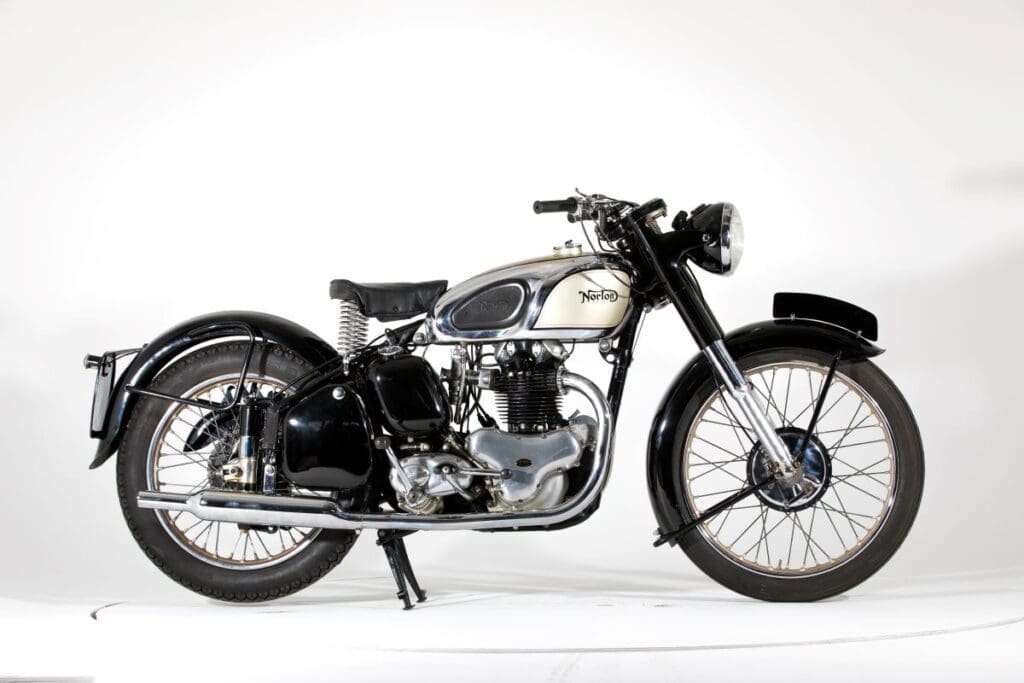
Norton’s foray into the twin-cylinder market was marked by the launch of the 500cc Model 7. Designed by Bert Hopwood, this overhead valve (OHV) twin borrowed heavily from Norton’s renowned single-cylinder heritage but added the grunt necessary to satisfy the increasing appetite for speed and power post-Second World War. With a simple but robust design, the Model 7 laid the groundwork for future innovations.
The Featherbed Revolution: Model 88 1951-1966

In 1951, Norton introduced the Model 88 Dominator, which combined the Model 7 engine with a revolutionary Featherbed frame. This frame, designed by the McCandless brothers, set a new standard in motorcycle handling. Riders of the day praised the bike’s ability to corner with precision, making it a popular choice for both road riders and racers. The Featherbed frame, with its combination of rigidity and lightweight characteristics, would become the hallmark of Norton’s racing success in the 1950s and 60s.
Growth and Power: Model 99
As the need for more power grew, Norton responded in 1956 with the introduction of the 600cc Model 99 Dominator. This was a larger, more powerful version of the Model 88, offering riders improved torque and top-end performance without sacrificing the acclaimed handling of the Featherbed frame. The Model 99 marked the company’s efforts to keep up with the growing demands for high-speed touring motorcycles.
The early 1960s: 650SS and Dominator De Luxe (1962)
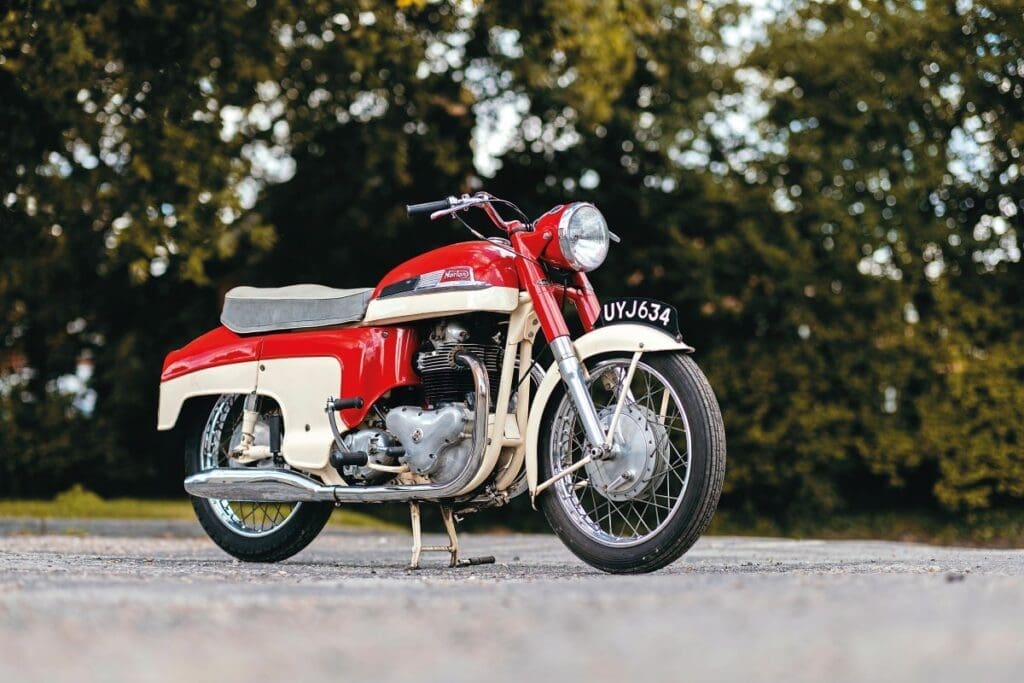
The early 1960s saw Norton upping the ante once again with the 650cc models. The 650SS, released in 1962, was a high-performance variant of the Dominator, and quickly gained a reputation as one of the fastest production motorcycles of its day. It became synonymous with racing success and was favoured by privateers in the burgeoning café racer scene. Alongside the 650SS, the Dominator De Luxe brought similar power to a wider, more touring-focused audience, offering riders a smooth and comfortable, yet powerful, experience on long journeys.
The Atlas: an export success (1962)

Also launched in 1962, the Norton Atlas was initially designed for the US market, where riders sought larger capacity engines for long-distance riding. With its 750cc engine, the Atlas had the grunt to compete with the big American V-twins, yet retained Norton’s superior handling characteristics. While powerful, the Atlas was also known for its increased vibration, an issue that would later be addressed in future models.
The Mercury: the final evolution (1968-1970)
As Norton approached the end of the 1960s, the first-generation twin line was reaching the limits of its development. The Norton Mercury, produced from 1968 to 1970, was the final iteration of the 600/650cc lineage. Featuring a single-carb 650cc engine, it was a simplified and more affordable option in the Norton lineup. Although it marked the end of the original heavy twin development, the Mercury is often seen as a swansong for Norton’s classic twin-cylinder machines before the company shifted its focus to the Commando range.
Norton’s heavy twins played a crucial role in the brand’s history, setting performance benchmarks throughout the 1950s and 60s. From the revolutionary Featherbed-framed Dominators to the Atlas, these machines reflected both the changing tastes of motorcyclists and the technical ingenuity of Norton’s engineers. While the Commando would go on to become Norton’s defining model in the 1970s, the earlier generation laid the groundwork for Norton’s success, cementing the brand’s place in the pantheon of great British motorcycle makers.

